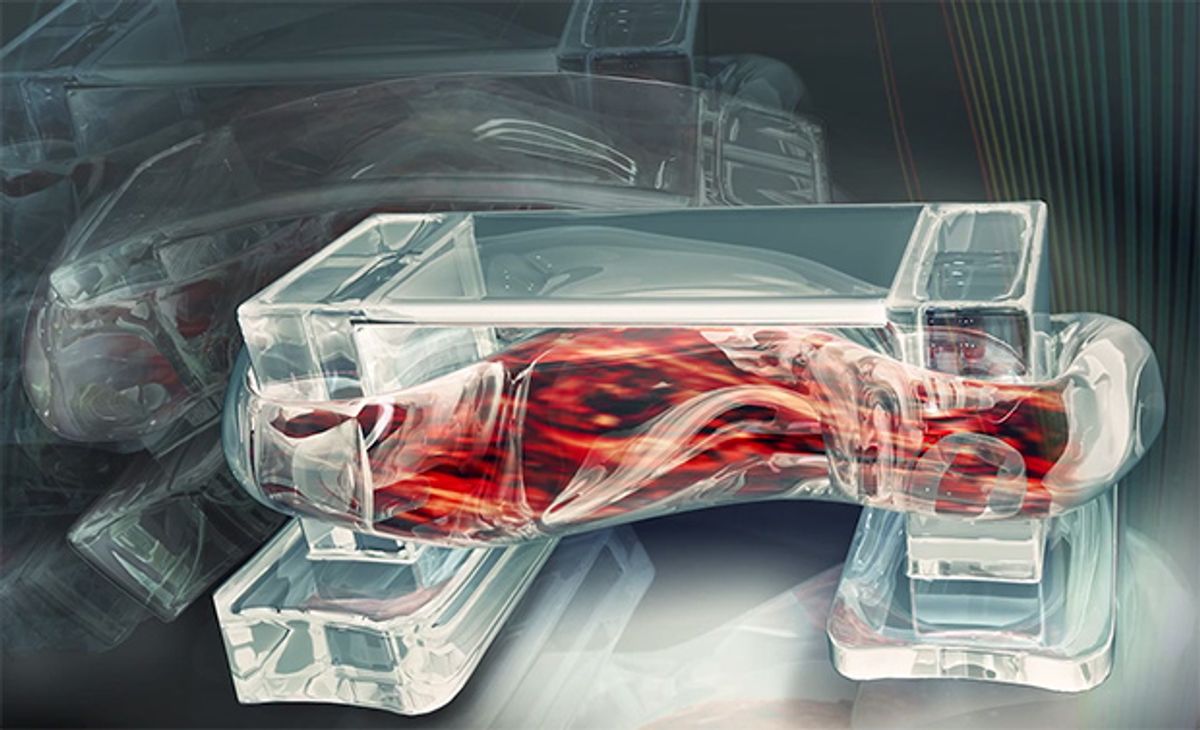Most robots are powered by electrical motors that are big, bulky, heavy, and if they break, you have to replace them. Animals, on the other hand, use a biological motor—a muscle—that also requires electricity, but is far more efficient and, given a chance, can repair itself. We're just starting to be able to manipulate biological structures like these in clever enough ways to let us harness their awesomeness, and engineers at the University of Illinois at Urbana-Champaign have worked them into a tiny little "bio-bot" that uses muscle cells to walk.
The backbone of this robot is made of hydrogel, although it acts more like a combination of bone and tendon, providing both structure and flexibility. The muscle is anchored to hydrogel feet, and when external electrical impulses cause the muscle to contract, the feet get pulled together, and the bio-bot walks.
This is all very early stage research, and what's most exciting is how these little guys can be evolved into more sophisticated robots with all the things that you'd want in a robot. Like, say, steering, which could be accomplished by integrating neurons that would drive separate muscles and respond to chemical gradients or changes in light. Long term, things might get even cooler:
“It's only natural that we would start from a bio-mimetic design principle, such as the native organization of the musculoskeletal system, as a jumping-off point,” said graduate student Caroline Cvetkovic, co-first author of the paper. “This work represents an important first step in the development and control of biological machines that can be stimulated, trained, or programmed to do work. It's exciting to think that this system could eventually evolve into a generation of biological machines that could aid in drug delivery, surgical robotics, 'smart' implants, or mobile environmental analyzers, among countless other applications.”
[ LIBNA ] via [ UIUC ]
Evan Ackerman is a senior editor at IEEE Spectrum. Since 2007, he has written over 6,000 articles on robotics and technology. He has a degree in Martian geology and is excellent at playing bagpipes.



